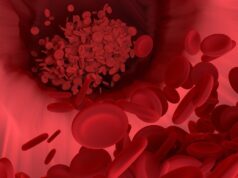 Factors such as delayed diagnosis may contribute to the differences in women and men’s treatment for heart disease, rather than gender bias alone.
Factors such as delayed diagnosis may contribute to the differences in women and men’s treatment for heart disease, rather than gender bias alone.
Women with heart disease typically receive less complete surgical revascularisation with arterial grafts than men. This may be to do with age and comorbidity, a study published in The Annals of Thoracic Surgery has found.
“It appears that by the time women present with heart disease, they are slightly older and may be facing more comorbidities such as obesity and diabetes,” says senior author, Fraser D Rubens, of the University of Ottawa Heart Institute in Ottowa, Canada. “As a consequence, these higher operative risks may preclude women from undergoing the more complex multiple arterial revascularisation procedures that men receive.”
Using the Ottawa Heart Institute database, Rubens and colleagues, analysed data from 19,557 patients who underwent coronary artery bypass grafting (CABG) between January 1990 and March 2015. Using 45 pretreatment variables, they narrowed the group to 1,254 patients (627 men and 627 women) who had similar characteristics so that they could test for differences between the two groups.
After correcting for patient factors including age, body weight, and diabetes, the researchers found no difference in the percentages of bilateral internal thoracic artery and radial artery use between men and women. The bilateral internal thoracic artery was used in 31.9% of men and 30.1% of women. The radial artery was used in 44.5% of men and 44.1% of women.
However, significantly fewer women received three arterial grafts when compared with men (7.3% vs. 10.5%).

“Most clinicians assume correctly that women are less likely to receive multiple arterial revascularisation, but they tend to believe that this is solely on the basis of a gender bias,” says Rubens. “The current study shows that gender does not play a significant role in this decision. There is no reason that, when adjusted for all risk factors, the degree of multiple arterial revascularisation in women should be any different than what men receive.”
The researchers explained that one reason for delayed diagnosis may be that current testing strategies, such as exercise treadmills, are “notoriously insensitive and nonspecific in women.” Newer diagnostic tests, such as coronary computed tomography (CT) and myocardial perfusion imaging, may address the limitations and allow doctors to better diagnose severe coronary disease in women, allowing for earlier and more complex interventions. In addition, they pointed to a “protective effect” from oestrogen that may delay the onset of the disease.
According to the researchers, women with coronary artery disease are at a significant disadvantage compared with men because they do not consistently receive the same intensive, invasive evaluation and treatment as men. Men receive greater access to effective cardiac treatments, including medications and revascularisation, while women remain undiagnosed for many years.
“With earlier diagnoses, women could be referred for revascularisation as healthier surgical candidates, affording them the opportunity of complete arterial revascularisation strategies with better postoperative outcomes,” says Rubens. “This study has given us the confidence to continue educating surgeons on the feasibility of multiple arterial revascularisation and to ensure that this choice of surgical strategy be based on patient risk profiles and not solely on gender.”










